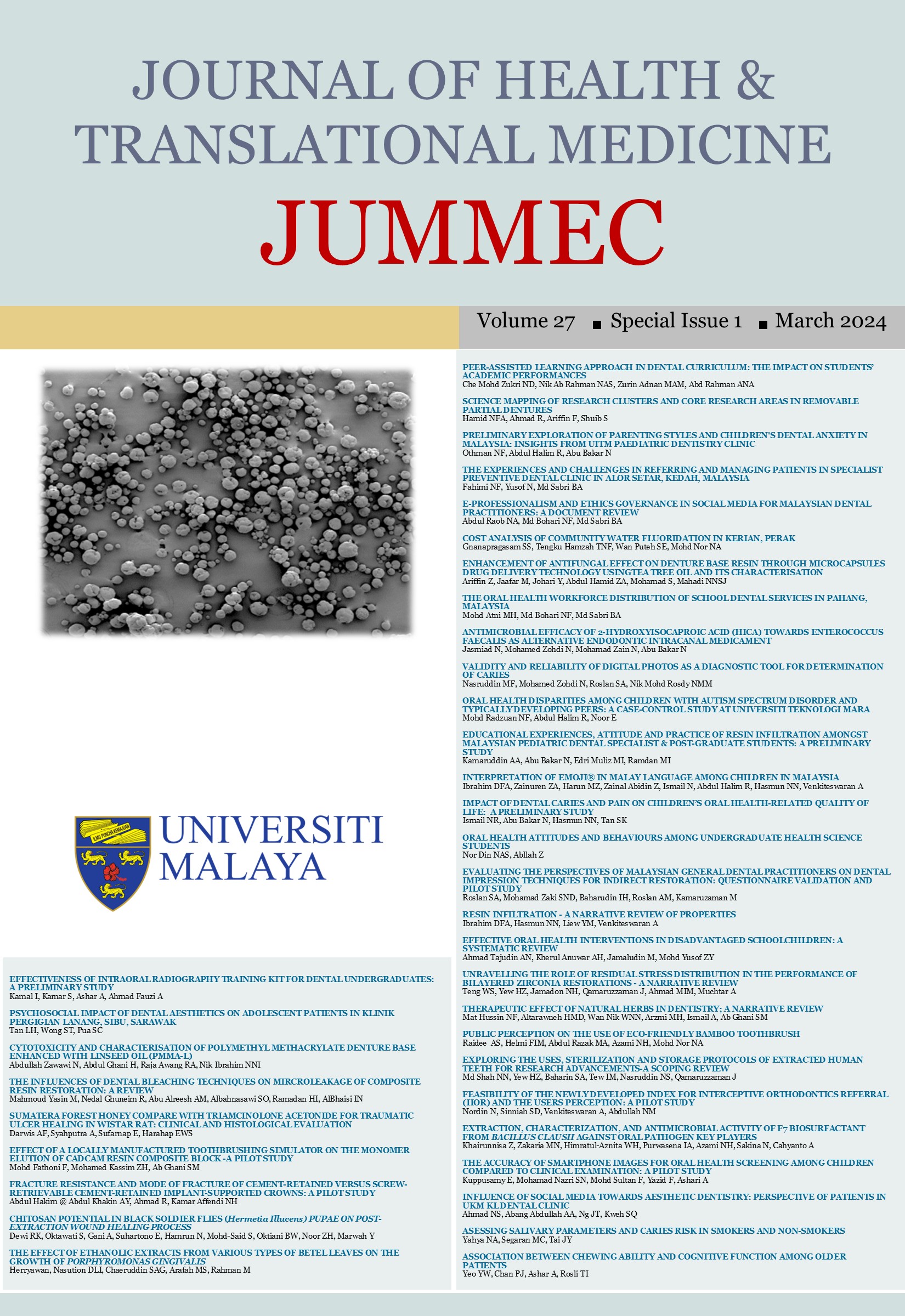THE ACCURACY OF SMARTPHONE IMAGES FOR ORAL HEALTH SCREENING AMONG CHILDREN COMPARED TO CLINICAL EXAMINATION: A PILOT STUDY
Received 2024-03-01; Accepted 2024-03-22; Published 2024-03-25
DOI:
https://doi.org/10.22452/jummec.sp2024no1.25Abstract
The aim of this study was to determine the accuracy of smartphone images for oral health screening among children compared to clinical examination. Children aged 7–12 years old were visually examined by Examiner 1 (E1) for caries status using the International Caries Detection and Assessment System (ICDAS), and carious lesions were classified as enamel or dentin caries, dental plaque assessment using the Debris Index (DI), and gingival health using the Modified Gingival Index (MGI). Following the clinical examination (CE), an iPhone 13 (Apple Corp.) was used to take five images of their teeth for caries detection and one frontal view image of anterior teeth coated with plaque disclosing gel for smartphone image examination (SIE) using the same clinical parameters. The smartphone image examination was conducted independently by Examiner 2 (E2) without any knowledge of the results from the visual clinical examination. The sensitivity of smartphone images to detect enamel and dentin caries was similar at 74% and 72%, respectively, which reflects its ability to correctly identify participants with dental caries. The specificity and positive predictive value (PPV) for dentin caries were both 100%, while the negative predictive value (NPV) was approximately 98%. The positive predictive value and negative predictive value of enamel caries detection were 76.9% and 77.4%, respectively. The inter-rater reliability between the two examinations was calculated using ICC, and the scores for DMFT, DI, and MGI were 0.842, 0.964, and 0.832, respectively. The Wilcoxon signed rank test was used to compare the mean DMFT, DI, and MGI between the visual and image-based examinations with p-values of 0.121, 0.965, and 0.445, respectively (not statistically significant). The findings in this pilot study showed that the mobile teledentistry approach using smartphone images has demonstrated its ability to identify caries, plaque, and gingival status in children with acceptable diagnostic accuracy when compared to visual clinical examination. Smartphone cameras can serve as a reliable and practical alternative in screening for enamel and dentin carious lesions, dental plaque, and gingival status when compared to the visual clinical examination.
Downloads
Downloads
Published
Issue
Section
License
All authors agree that the article, if editorially accepted for publication, shall be licensed under the Creative Commons Attribution License 4.0 to allow others to freely access, copy and use research provided the author is correctly attributed, unless otherwise stated. All articles are available online without charge or other barriers to access. However, anyone wishing to reproduce large quantities of an article (250+) should inform the publisher. Any opinion expressed in the articles are those of the authors and do not reflect that of the University of Malaya, 50603 Kuala Lumpur, Malaysia.


